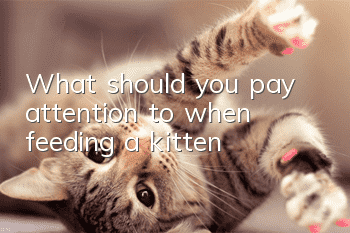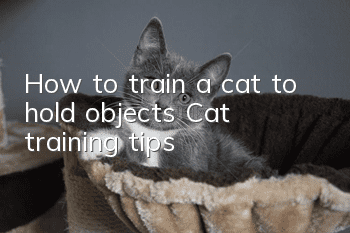What should you pay attention to when feeding a kitten?

Precautions for kitten feeding:
1. The nipple head of commercially available feeding bottles usually does not have a hole. You can use a needle of appropriate size to heat it and poke a hole in the nipple. , or use small scissors to cut out cross holes. The size of the nipple hole is mainly the size that allows 1 drop to flow out when the bottle is gently pressed, and then the size of the hole is adjusted based on the kitten's situation when sucking milk.
2. To ensure the hygiene and cleanliness of utensils, good hygiene habits must be followed when feeding newborn kittens. All bottles, pacifiers, feeding tubes and other supplies must be kept clean; at the same time, all feeding kits must be carefully cleaned Utensils can be rinsed with boiled warm water.
3. The replacement milk should be heated before feeding. The temperature should be the same as the body temperature of the female cat (38.6C). Remember to drop the replacement milk on the back of your hand to confirm the appropriate temperature. If it is milk powder, you can brew a daily amount first and refrigerate it in a glass container. When you want to feed the kitten milk, take out a single amount and heat it to avoid spoilage due to temperature changes.
4. Do not feed milk, evaporated milk, condensed milk, bagged milk, yogurt or human milk. Because most cats suffer from lactose intolerance, the sugar or lactose in milk will easily cause diarrhea and loose stools. Not only will the cat not be able to absorb the nutrients of milk, but it will cause serious gastrointestinal problems and even lose the baby's life.
5. Choose special kitten milk powder/goat milk powder. It is really impossible to prepare it for cats in advance. Go to veterinary clinics and large pet stores to buy Shuhua milk and goat milk powder for infants, which can also be used as a short-term emergency drink. , if you really don’t have the things mentioned above around you, it’s best to just feed some water, which can avoid dehydration of the cat and won’t harm the stomach.
6. It is best to measure the cat’s temperature before feeding. Never feed a cat with a body temperature below 35 degrees to avoid aspiration pneumonia, difficulty breathing, and even death of the cat.
7. If the kitten’s ears or small pads feel cold to the touch and you put your fingers into its mouth and it still feels cold, then you can judge that the kitten is hypothermic and wrap it in a wool blanket. , hold it close to your body, and at the same time gently stroke it with your hands for one to two hours, and then feed it after the body temperature gradually warms up.
- What does it mean when a cat has bald hair above its eyes?
- Can pregnant cats be dewormed? Will it have any effects?
- What should I do if my new kitten won’t eat?
- How to stop a kitten from meowing in the middle of the night. Don’t worry, find the right reason first.
- Why is it so difficult to train cats? Cats don’t cooperate in training!
- How to develop pet cat eating habits? How to train pet cats!
- Why do kittens die when they are born? Possible reasons for the death of newborn kittens!
- How to Treat Cat Filariasis
- Will a cat die if it licks Fengyoujing?
- How to treat a ragged cat’s cough How to treat a ragged cat’s cough



